Abstract
Recombination between influenza A viruses as a method of producing strains suitable for use in vaccines is discussed with particular reference to a recombination system involving an attentuated laboratory strain A/PR8/34 (HoN1) and a recent isolate of the epidemic strain A/Hong Kong/68 (H3N2). A variety of properties of the viruses were shown to be segregated independently of one another during recombination. These properties included the envelope antigens (haemagglutinin and neuraminidase), growth capacity in the fertile egg and attenuation for man. Some of the recombinants were considered suitable for use in vaccines either inactivated (whole virus particles or subunits) or live. The application of this technique to future requirements for vaccine strains are discussed with particular reference to the safety aspect of using recombinants in live vaccines.
Full text
PDF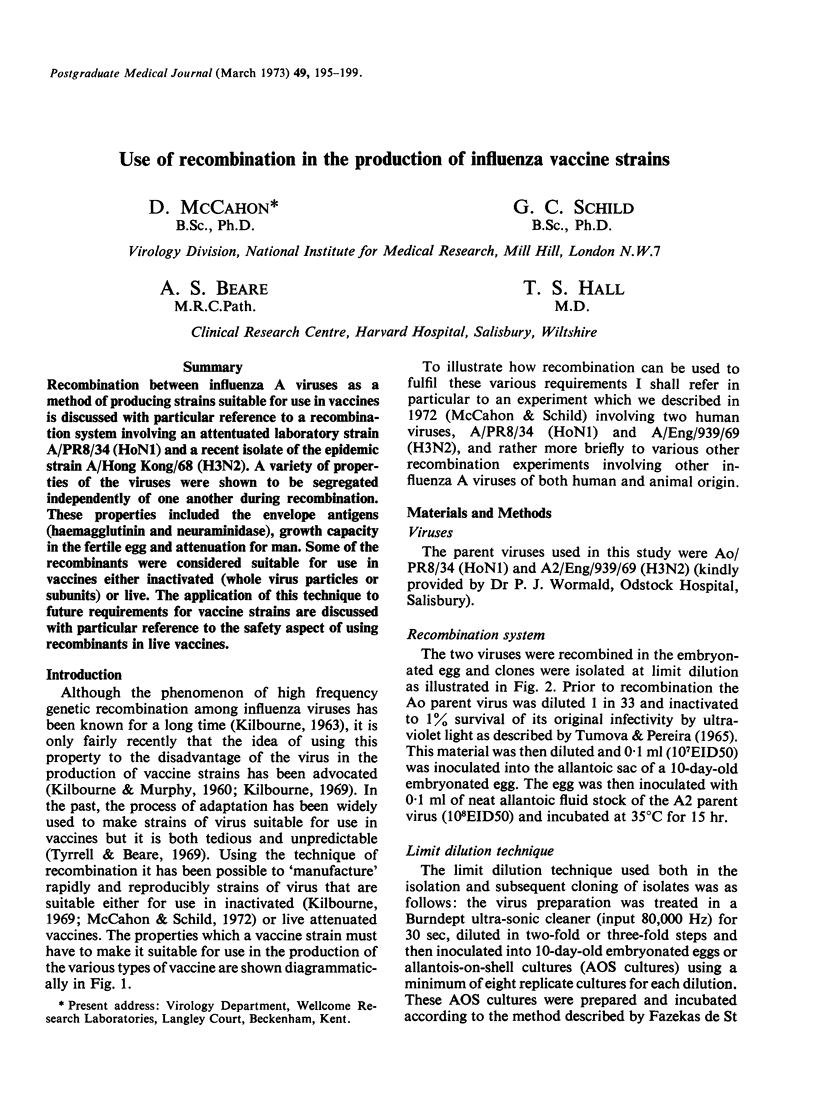
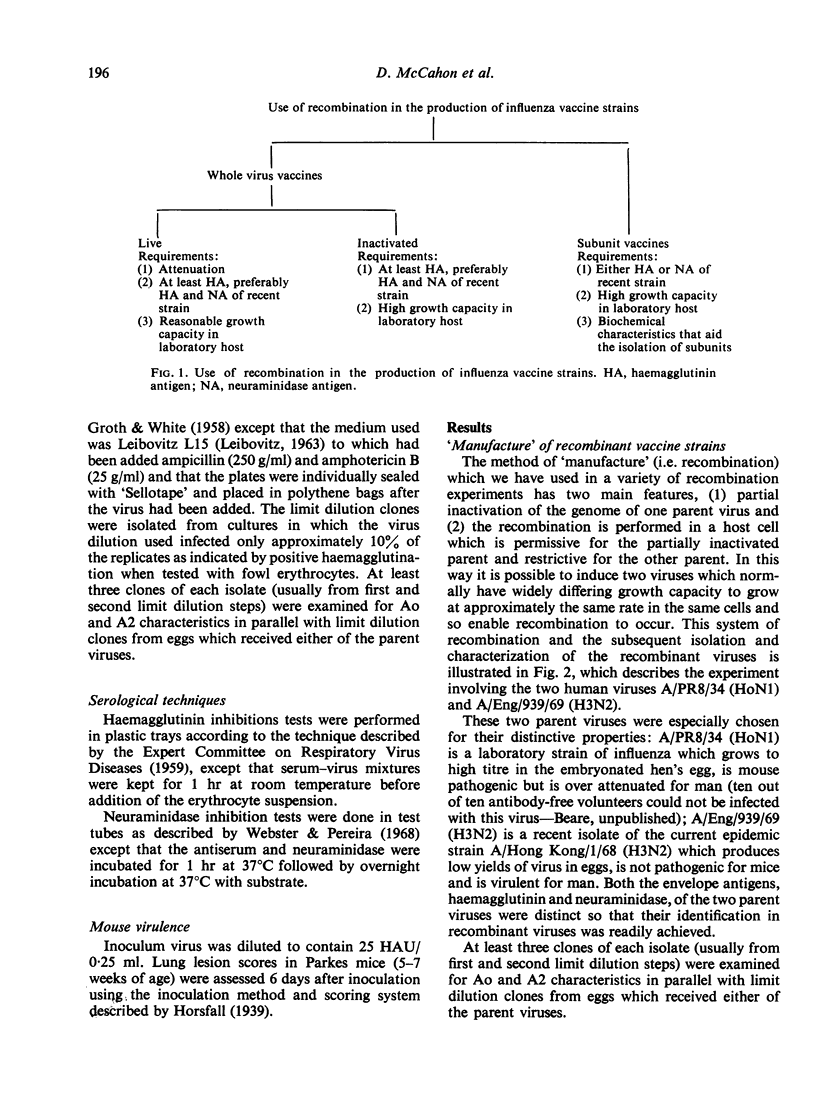
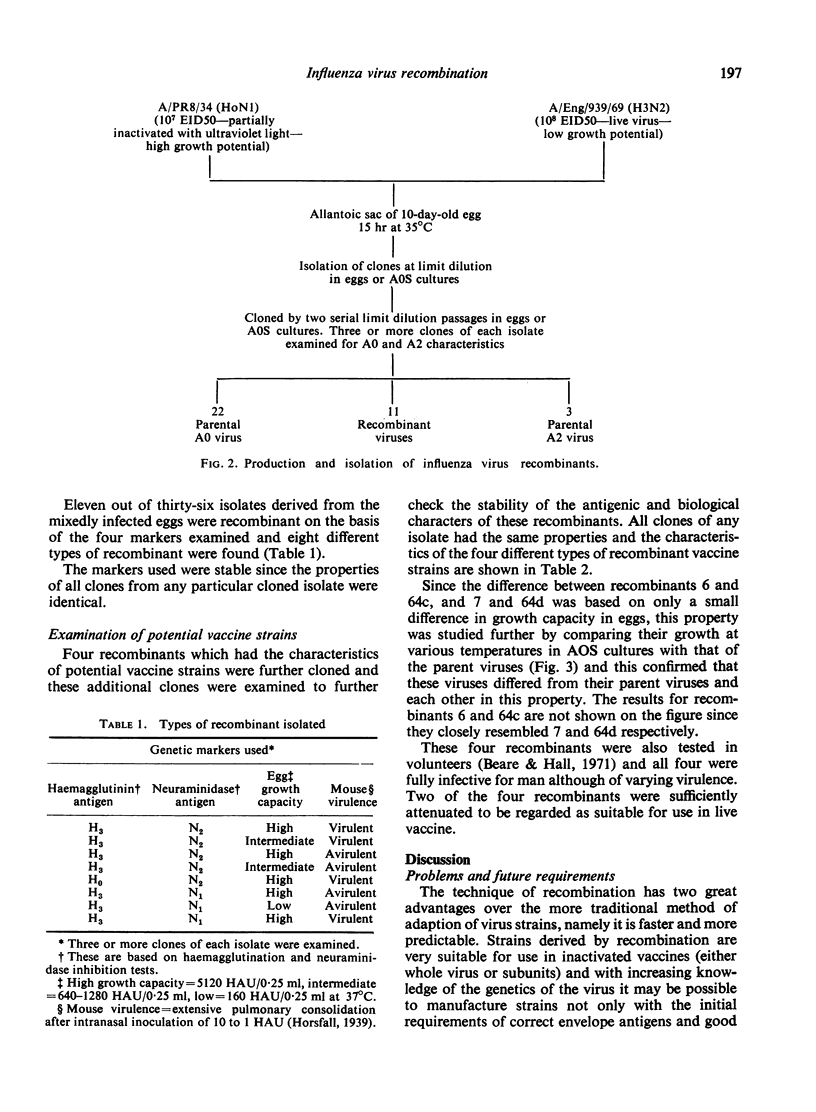
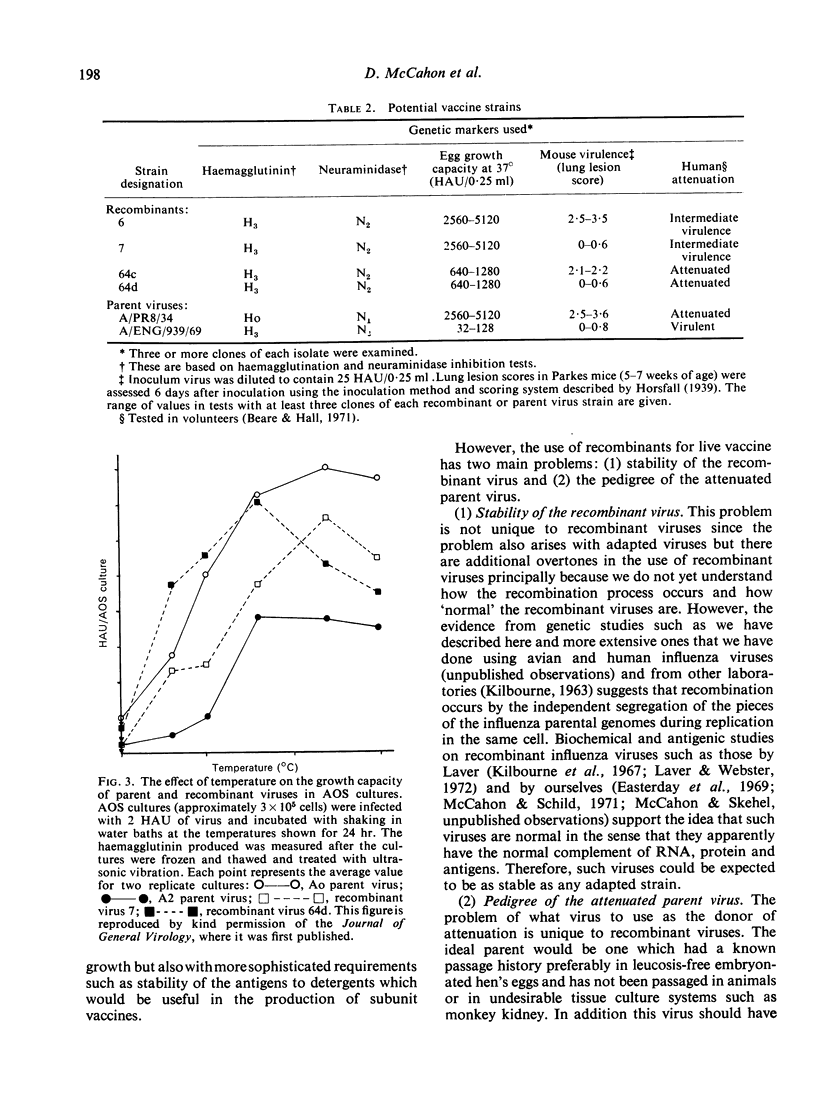
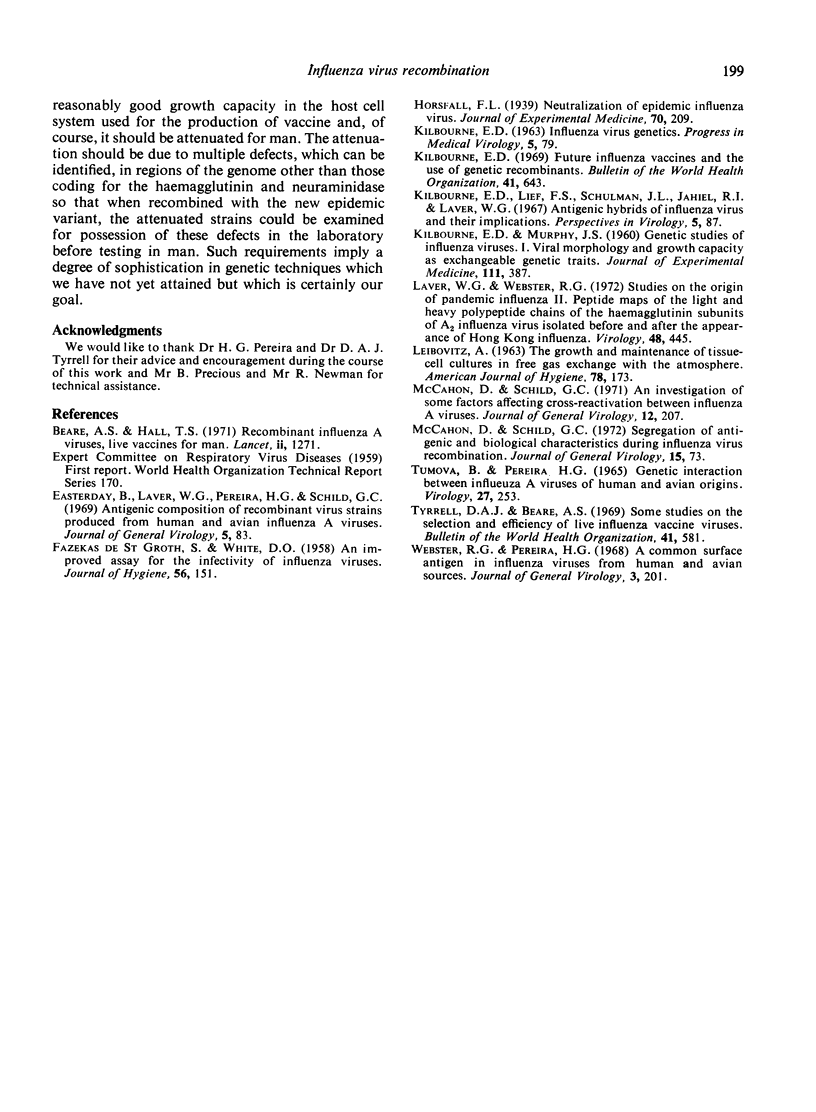
Selected References
These references are in PubMed. This may not be the complete list of references from this article.
- Beare A. S., Hall T. S. Recombinant influenza-A viruses as live vaccines for man. Report to the Medical Research Council's Committee on Influenza and other Respiratory Virus Vaccines. Lancet. 1971 Dec 11;2(7737):1271–1273. doi: 10.1016/s0140-6736(71)90597-6. [DOI] [PubMed] [Google Scholar]
- Easterday B., Laver W. G., Pereira H. G., Schild G. C. Antigenic composition of recombinant virus strains produced from human and avian influenza A viruses. J Gen Virol. 1969 Jul;5(1):83–91. doi: 10.1099/0022-1317-5-1-83. [DOI] [PubMed] [Google Scholar]
- FAZEKAS DE ST GROTH S., WHITE D. O. An improved assay for the infectivity of in influenza viruses. J Hyg (Lond) 1958 Mar;56(1):151–162. doi: 10.1017/s0022172400037621. [DOI] [PMC free article] [PubMed] [Google Scholar]
- Horsfall F. L. NEUTRALIZATION OF EPIDEMIC INFLUENZA VIRUS : THE LINEAR RELATIONSHIP BETWEEN THE QUANTITY OF SERUM AND THE QUANTITY OF VIRUS NEUTRALIZED. J Exp Med. 1939 Jul 31;70(2):209–222. doi: 10.1084/jem.70.2.209. [DOI] [PMC free article] [PubMed] [Google Scholar]
- KILBOURNE E. D., MURPHY J. S. Genetic studies of influenza viruses. I. Viral morphology and growth capacity as exchangeable genetic traits. Rapid in ovo adaptation of early passage Asian strain isolates by combination with PR8. J Exp Med. 1960 Mar 1;111:387–406. doi: 10.1084/jem.111.3.387. [DOI] [PMC free article] [PubMed] [Google Scholar]
- Kilbourne E. D. Future influenza vaccines and the use of genetic recombinants. Bull World Health Organ. 1969;41(3):643–645. [PMC free article] [PubMed] [Google Scholar]
- LEIBOVITZ A. THE GROWTH AND MAINTENANCE OF TISSUE-CELL CULTURES IN FREE GAS EXCHANGE WITH THE ATMOSPHERE. Am J Hyg. 1963 Sep;78:173–180. doi: 10.1093/oxfordjournals.aje.a120336. [DOI] [PubMed] [Google Scholar]
- Laver W. G., Webster R. G. Studies on the origin of pandemic influenza. II. Peptide maps of the light and heavy polypeptide chains from the hemagglutinin subunits of A 2 influenza viruses isolated before and after the appearance of Hong Kong influenza. Virology. 1972 May;48(2):445–455. doi: 10.1016/0042-6822(72)90055-4. [DOI] [PubMed] [Google Scholar]
- McCahon D., Schild G. C. An investigation of some factors affecting cross-reactivation between influenza A viruses. J Gen Virol. 1971 Sep;12(3):207–219. doi: 10.1099/0022-1317-12-3-207. [DOI] [PubMed] [Google Scholar]
- McCahon D., Schild G. C. Segregation of antigenic and biological characteristics during influenza virus recombination. J Gen Virol. 1972 Apr;15(1):73–77. doi: 10.1099/0022-1317-15-1-73. [DOI] [PubMed] [Google Scholar]
- Tumova B., Pereira H. G. Genetic interaction between influenza A viruses of human and animal origin. Virology. 1965 Nov;27(3):253–261. doi: 10.1016/0042-6822(65)90104-2. [DOI] [PubMed] [Google Scholar]
- Tyrrell D. A., Beare A. S. Some studies on the selection and efficiency of live influenza vaccine viruses. Bull World Health Organ. 1969;41(3):581–584. [PMC free article] [PubMed] [Google Scholar]
- Webster R. G., Pereira H. G. A common surface antigen in influenza viruses from human and avian sources. J Gen Virol. 1968 Sep;3(2):201–208. doi: 10.1099/0022-1317-3-2-201. [DOI] [PubMed] [Google Scholar]


